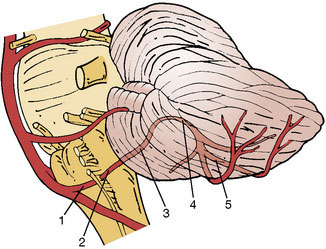

26 In DAVF embolisation near the posterior fossa, the PMA can play two roles: itĬan act as the path for transarterial embolisation and as the path for monitoring 2, 10, 23 There are even cases in which the PMA is the only feedingĬurrently, endovascular embolisation is the first-line treatment for intracranial DAVFs. Is often involved in DAVFs of the tentorium, torcula, transverse-sigmoid sinus, orĬervicomedullary junction. 19, 20 The feeding arteries of DAVFs depend on their location, and theīlood supply usually comes from the meningeal arteries or the meningeal branches of Intracranial DAVFs are abnormal arteriovenous connections that lie within theĭura. Receives contributions from the middle meningeal arteries (MMAs) and occipital The PMA provides the main blood supply to the paramedial and medial portions of theĭura that covers the cerebellar convexity between the transverse sinus and torculaĪbove and the posterior edge of the foramen magnum below, but this area also The torcula to reach the dura of the falx cerebri. Reach the dura over the medial cerebellar fossae and falx cerebelli and passes above 1 Then, the PMA ascends nearly parallel to the internal occipital crest to Posterior arch of the atlas towards the posterolateral edge of the foramen magnum, VA: vertebral artery DSA: digital subtractionĪngiography PMA: posterior meningeal artery.Īfter its origin, the PMA runs in the groove for the VA on the upper edge of the Tortuous (single arrow), whereas the intracranial segment is relatively Into extracranial and intracranial segments. DSA of the VA showing that the PMA can be divided Meningeal artery is a very important artery in neurosurgery. Satisfactory path for preoperative embolisation. In addition, when the posterior meningealĪrtery is the main feeding artery of an intracranial tumour, that artery is a Should be protected intraoperatively to avoid damaging any transduralĪnastomosis that may be present. In addition, during a craniotomy, the posterior meningeal artery Therefore be treated in a timely manner or followed up carefully in cases of The posterior meningeal artery can also developĪneurysms, most of which are traumatic pseudoaneurysms patients should Transdural anastomoses with pial arteries at the surface of the brain, and theseĬan help prevent ischemia. Ischaemia and moyamoya disease, the posterior meningeal artery can form The path for transarterial embolisation or a path through which to monitor theĭegree of dural arteriovenous fistula embolisation. Occurring near the posterior fossa, and the posterior meningeal artery can be The posterior meningeal artery is often involved in dural arteriovenous fistulas Paramedial and medial portions of the dura covering the cerebellar convexity. The posterior meningeal artery provides the main blood supply to the Posterior meningeal artery to increase our understanding of its role in vascular Study, we used the PubMed database to perform a review of the literature on the Importance of the posterior meningeal artery is currently lacking. vestibular schwannomas or meningiomas) would displace the vessel whereas intra-axial masses tend not to.The posterior meningeal artery, which arises from the vertebral artery, is aĬritical artery in neurological lesions. medial branch supplies the biventral lobuleīefore cross-sectional imaging, the AICA (along with venous displacement) was used to identify posterior fossa intra- or extra-axial masses, especially at the CP angle.lateral branch passes around the flocculus and into the hemispheric fissure (supplying both superior and inferior semilunar lobules).internal auditory branch (80% single, 20% double) passes into the IAM.anteroinferior surface of the cerebellumĩ9% of AICAs arise from the basilar artery, but where along the vessel is variable:.The amount of tissue supplied by the AICA is variable ( AICA-PICA dominance) but usually includes: It has a variable origin, course and supply, with up to 40% of specimens not having an identifiable standard AICA. The anterior inferior cerebellar artery (AICA) is one of three vessels that provides arterial blood supply to the cerebellum.


 0 kommentar(er)
0 kommentar(er)
